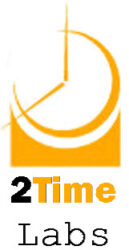I just read an article that describes the “problem” of capturing everything, in which I think, by the end, the solution turns out to be worse than the original issue.
The article can be found at Merlin Mann’s site — 43 folders — under the title: The Problem of Ubiquitous Capture.
The author, Matt Wood, makes the point that his capture points end up with a lot of crap in them. Right alongside the important actions like “remember my wife’s birthday” are other unimportant ones like “build a server farm in my closet.”
His issue does not seem to be that these items don’t belong together in his capture points. Instead, the problem is that some useless items end up making their way onto his todo lists, where he admits they don’t belong. He says that “a lot of us do have issues dropping something once it’s reached that level of commitment. So we keep it on the list, taking up space and adding to the cumulative dread of a to-do list bloated with junk.”
Instead, he suggests that users not try to write everything down, and instead trust that good ideas will find their way back into the mind once again, if they are any good. He reports that his to-do list has shortened considerably.
I think that his analysis is flawed, and it’s because he’s working on the wrong time management fundamental. Here is how I would advise him if I were his coach (I know, that’s pretty presumptuous of me…!) Here, I am using 4 of the 11 fundamentals of time management.
It’s the Emptying, not the Capturing
If items are on lists that should not be there, and capture points are being carried around with too many dead items on them, then the problem is in the fundamental — Emptying, not in Capturing. Either one of two things is happening — he is not Emptying often enough, leading his capture points to overflow, OR he is not Emptying rigorously, and failing to make a decision about what should happen next with each time demand. Instead of making a tough decision about how to dispose of a time demand, he is simply adding it to a list.
It’s an easier action to take, but when each item is added to a list, the integrity of his time management system is weakened by just a small amount. These small amounts add up to the point where he eventually loses respect for his own system because he knows it’s full… of crap.
The problem is not that his mind came up with the bad idea to begin with, or that he captured it in the moment he believed it to be useful. Instead, it’s his faulty Emptying that results in him putting it in a List, instead of Tossing it away.
My experience is that I have little or no control over the quality of my thoughts. Instead, they have a life of their own, and the good ones flow just as fast as the bad ones do.
The problem is that they don’t come tagged with good and bad tags, and it’s often inconvenient to evaluate and weigh each thought in the moment it occurs, due to the fact that I am often otherwise occupied… thank God they don’t make waterproof PDA’s (or do they?)
The time to evaluate and process the thought/time demand comes later, when I am good and ready to Empty. At that point, each and every time demand should be removed from all capture points.
Letting Ideas Flow and Flow
Furthermore, I have noticed that when I don’t capture ideas (of unknown quality,) they simply keep coming back again and again until I acknowledge their existence. The author takes this to be a sign of idea quality, and suggests not writing them down, because the good ones are most likely to return.
I don’t have that particular experience, especially when I can’t tell whether an idea is good or not because I haven’t actually spent the time to evaluate its value. I have found that thoughts keep coming back until they are recorded in a trustworthy place, and only then does my mind relax and open itself up to the next thought.
It’s like making a mental list of stuff to buy at the grocery store, and working hard to remember it for the next 30 minutes until one is walking down the first aisle of the supermarket. All of that work to remember the contents of the list could have been saved by making a list, and the mind could have devoted itself to doing something else more worthwhile during that same 30 minutes.
I have discovered that the throughput of good ideas in my mind increases when I treat each one with respect, and store it in a safe place even if it is to be Tossed upon future consideration.
The problem, once again, is not in the step of Capturing.
Upgrading Scheduling Means Better Listing
The biggest problem I think that the author faces, however, is one that is not mentioned directly. The challenge that people who are White and Yellow Belts in Scheduling often have is that they add time demands to lists in a way that excuses them from having to account for the fact that each time demand requires time.
In other words, it’s all to easy for someone to make a list of items to be done in the next day/week/month/year that simply is impossible to do because the time required is not being accounted for. This fact would be obvious to them if they were practicing Scheduling at a higher skill level, and were filling out an actual agenda of items to be completed. Many who do so for the first time are sobered to discover that they are simply not able to do as much as they thought they could, and it’s not because they are lazy. It’s just that their lack of skill at Scheduling has kept them in the dark.
By the same token, while the item is on a list, it’s “time commitment” is hidden, as it simply lacks any relationship to the reality of a schedule.
In this way, lists can become bottomless, timeless voids into which anything can be thrown, without consequences. Their use needs to be carefully balanced with how the schedule is used, according to the user’s particular needs.
I can’t say definitively whether the author’s situation has anything in common with what I am saying here, but I do know that it applied to me before I was forced to schedule with greater skill.
The benefit of knowing the fundamentals lies in the fact that a user can better target their analyses of their own time management systems. Like a decent mechanic, they have an in-depth appreciation of how the system works, and can move quickly from symptoms to cure in a matter of minutes.
[email_link]





